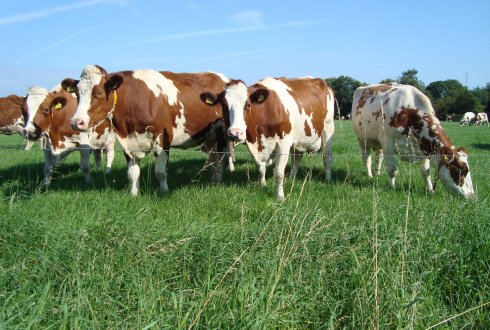



Revival of dual purpose dairy cattle breeds?
Recently published research of Theun Vellinga and Marion de Vries (2018) of Wageningen Livestock Research clearly shows that the challenge of reducing Green House Gas (GHG) emissions from milk production is inter-related with beef/veal production.Production of milk and meat
The authors concluded that mitigation strategies for dairy systems, such as increasing the milk production per cow, are less effective for reduction of GHG emissions, when also accounting for changes in the amount of beef/veal produced.
Dual purpose cattle breeds are of value
In the Netherlands, dual purpose cattle breeds (such as the Dutch breeds MRIJ (Meuse Rhine IJssel) and the Groningen Whiteheaded) have gradually been replaced by the specialized dairy breed Holstein Friesian, during the past decades. Recent research however shows that dual purpose breeds have a good potential for integral reduction of environmental impacts of milk ánd beef/veal production (Vellinga and de Vries, 2018; Zehetmeier et al., 2012). The reason is that specialized, pure beef production systems show higher GHG emission intensities, compared to beef produced in dairy systems.
Reconsider breeding strategies
Taking into account the very negative environmental impact of specialized beef production (see also Baltussen et al. 2017), we may want to re-consider the breeding strategies and choice of breeds for dairy production systems. Some of the endangered, local cattle breeds may become interesting again for the commercial dairy sector in the Netherlands, for the production of milk, beef ánd veal.
Dairy farmers know that a high milk production level per cow is not equal to the highest net-profit per cow or at farm level. GHG emission figures even more underline the importance of evaluation of economic and environmental efficiency at the level of farming systems.



